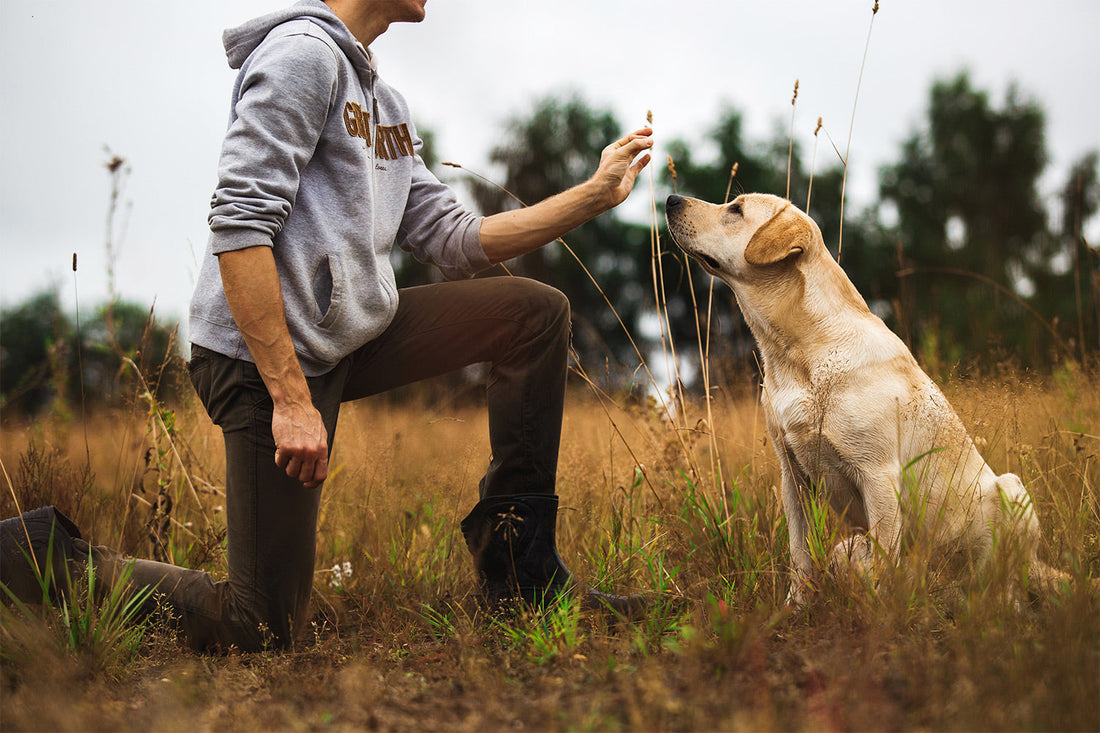
How To Train a Dog: A Brief Overview
Share
Most dogs aren’t naturally well-behaved upstanding canine citizens. Even though they’re domesticated, they still have naturally wild instincts and proclivities that are often contrary to living in an orderly household.
Many parents would say that dogs are a lot like toddlers in that regard. Both dogs and toddlers need some extra help to learn manners, solve behavior problems, and understand what you’re asking them to do.
Dog training doesn’t have to be difficult. As long as you’re patient and persistent, you should be able to help your dog master the fundamentals of obedience training in no time.
Understanding the way dogs learn and how to use positive reinforcement are the two most important things to keep in mind while you’re teaching your dog new tricks and combating unwanted behaviors.
Can I Train My Dog Myself?
Professional dog trainers are immensely helpful, but they are rarely necessary. In the majority of cases, most pet owners are able to train their dogs themselves, whether it be in socialization, potty training, or house training. There are a few exceptions where a professional dog trainer many come in handy, but the majority of the time, it is not necessary to hire a professional trainer. If you’ve adopted a shelter dog who previously lived in an abusive home or endured a traumatic situation, consider working with a behaviorist to help your dog thrive. Traumatized or abused dogs may carry counterproductive behaviors as a result of their former situations, and behavioral experts can improve your dog’s quality of life and their new relationship with you. Some people feel like they don’t have enough time to train their dog. If you’re very busy or overcommitted in your everyday life, a dog may not be the best pet for your household. Dogs need a lot of care and stimulation, and children aren’t capable of properly caring for dogs. Responsible teens may be better suited for the job. If you’ve found a way to make it work, a professional trainer can help you establish the basis for obedient behavior.Is It Ever Too Late To Start Training a Dog?
It’s never too late or too early to start training a dog. Dogs in good cognitive health can continue to learn throughout their lives. If your ten-year-old dog never learned to roll over, you can start teaching your dog today. It may take a little longer to muster the necessary enthusiasm from senior dogs who are often more interested in napping, but they’re completely capable of learning new tricks. In some cases, adult dogs will even be easier to train than puppies. Puppies are often rambunctious. They’re easily distracted and heavily focused on having fun, making it difficult to capture their attention and keep their focus on the task at hand. Although it’s very important to train puppies, things like complicated tricks are better suited for adult dogs (or at least, older puppies) who have already mastered basic commands.What Is the First Thing You Should Train Your Dog To Do?
The best thing to do when beginning to train your dog is to teach your dog the basics of response and reward. Dogs that don’t have any training will often respond to the positive reinforcement of a yummy food treat or high value food treat .- Practice the sit and stay command, making your dog wait in place while you get them their treat. Hold a treat out in front of your dog. Say no a few times and don’t allow your dog to take the treat. Say yes, and allow your dog to take the treat.
- Move around and encourage your dog to walk towards you with yes and no commands, just like playing “red light, green light” with children.
- Teach your dog to stay in one place with yes and no commands, using positive reinforcement to reward their good behavior.
- Keep working on the same routine, as consistency is key when developing puppies are learning to master these skills. Practice until your dog understands yes and no.


